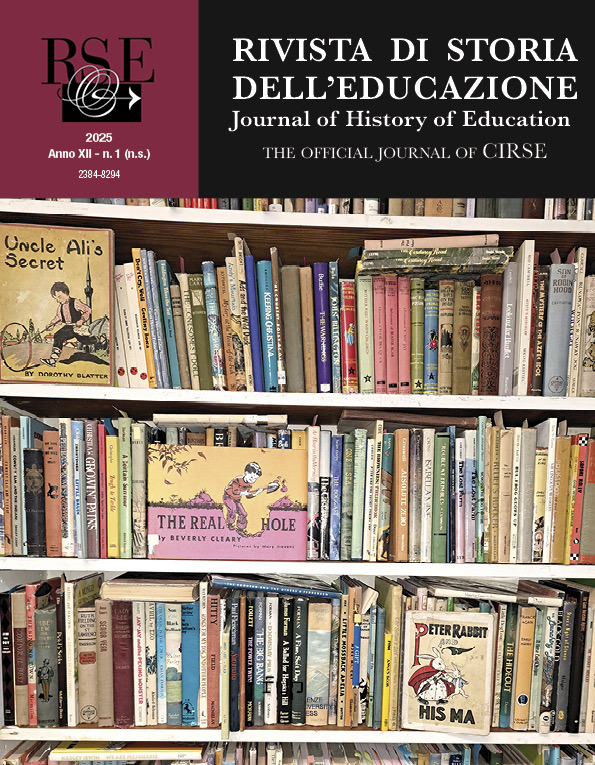Vol 12, No 1 (2025): Literature, visual culture and childhood: historical itineraries and hermeneutic perspectives
Issue Description
Images have always been linked to stories, long before these began to be printed in books embellished — with the evolution of printing methods processes — with colourful illustrations and rich in details. Initially — for technical and economic reasons — the images reproduced within the books were few and were woodcuts and engravings that were simple in structure and crude in sign, printed in black and white. Later, thanks to the introduction of chromolithographic printing in the second half of the 19th century, images began to be published in bright colours and in larger formats, ideal for captivating readers, invited to the pleasures of lingering, immersion and rapture.
Books, however, were only accessible to children from the upper classes and were published in limited editions at very high prices. The improvement of printing techniques and the lowering of production costs made it possible, over time, to publish widely illustrated books at lower prices, generating a new, very fruitful publishing market that began to spread to a broader socio-cultural context; since antiquity, after all, pictorial and sculptural representations had represented a significant form of access to high culture for the illiterate people.
The seductive power of images began at this point to play an important role in the commercial dimension as well, becoming a powerful attraction for young readers and the adults who bought books for them. Around the 1870s, thanks to Randolph Caldecott, the modern form of the picturebook was born in England, while in Italy, in the same years, the increasingly communicatively effective images created by illustrators began to populate the collective imaginary, generating figurative models and true icons of modern mass culture.
Starting in the first decades of the 20th century — initially in books for younger children — illustrations gradually took over from words, questioning the historical balance of forces existing between text and image within the book and favouring the rise of a new idea of authorship, not limited to the writer alone, but extended to the illustrator. The author of the illustrations, in fact, was acknowledged as architect of a verbo-visual narrative device significantly characterised by a complex series of elements that were not only iconic and graphic, but also material. After centuries at the service of the word, the iconic language was finally recognised as having full artistic, narrative and semantic dignity.

